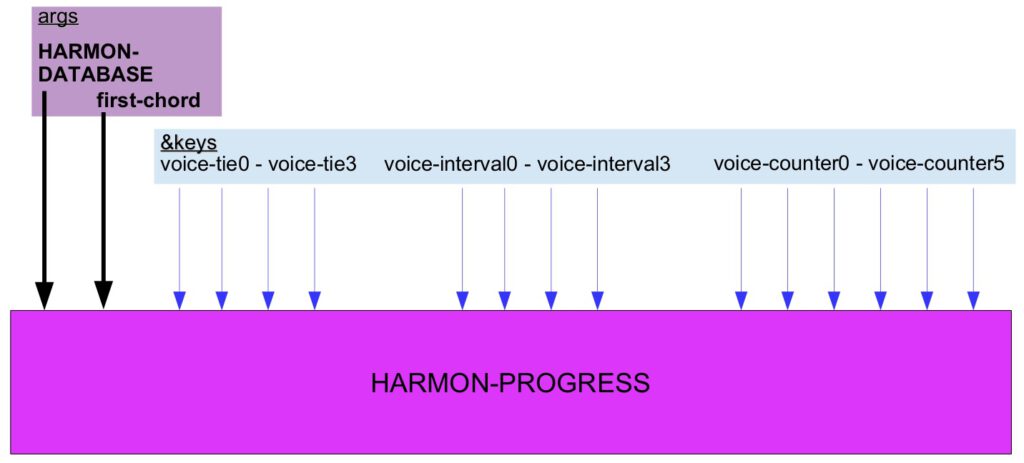Back to the HARMON-PROGRESS function:
The randomness that determines the sequence of chords, and thus the final composition, can be controlled in real time. Three different rules are implemented in the HARMON-PROGRESS function for this purpose:
- #voice-tie#
… always assigns the same note to a selected voice as in the previous chord.
Input syntax: Ordinal number of the selected instrument.
e.g.: 1

Fig. 2
2. #voice-interval
… limits the selected voice in its movement to certain intervals.
Input syntax: (ordinal number of the selected instrument (list of intervals))
e.g.: (2 (100 -100 700 -500))

Fig. 3
3. #voice-counter
… is a rule that determines the type of movement of two voices in relation to each other.
Either parallel (parallel), contrary (contrary), or in lateral movement (tied)
Input syntax: ((ordinal numbers of the two selected instruments) movement type)
z. B.: ((0 3) contrary).

Fig. 4
All the rules are accessible via &key-inlets.





About the author